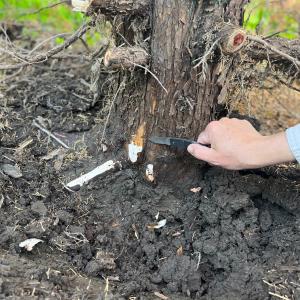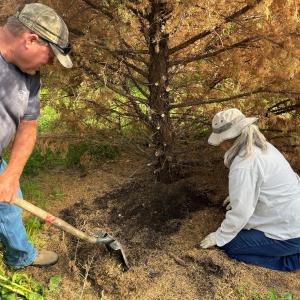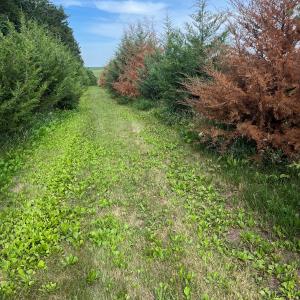Eastern Red Cedar Sudden Death
Eastern Red Cedar Sudden Death
The Nemaha Natural Resources District (NRD) received a handful of calls this spring about adolescent eastern red cedar trees suddenly and sporadically dying in windbreaks.
University of Nebraska Forester, Laurie Stepanek, visited the Nemaha NRD to do some detective work. Laurie is a forest health specialist and helps people across Nebraska with tree insects, diseases, and environmental issues. This is the third year in a row she has seen sudden death in Eastern Red Cedars, but the first year in southeastern Nebraska.
To begin the investigation, branches of the dead tree were removed to allow access to the base of the tree. An easy to spot and more common reason for a tree to die is planting it too deep. If the base of the tree does not have that slight flare out, then it was planted deeper than ideal. Another visible sign of stress is the presence of resin. When a tree has a wound or is trying to defend itself from insects or fungus it produces a sappy resin to protect itself.
Further investigation required locating a main root below ground and checking the color of the inner bark vs the color of the bark of the tree aboveground. In the case of all the trees looked at, there was a distinct color difference at the base of the tree and in the roots. This was indication to Laurie that the tree had a canker. A canker is a disease that makes its way into a tree. When environmental conditions cause a tree to become stressed that canker can attack the tree and eventually cause partial or full death. Environmental factors that on-set cankers include extremely quick fluctuations in temperatures, drought, etc. Cankers, like what was observed, are not usually spread from tree to tree. Laurie encouraged the landowners to remove the dead trees and plant replacements. When re-planting it is never a bad idea to have a little variety in your windbreaks in case diseases such as pine wilt develop in the future.




